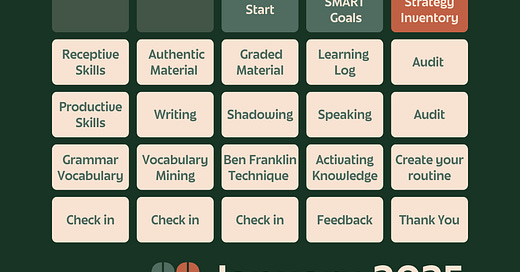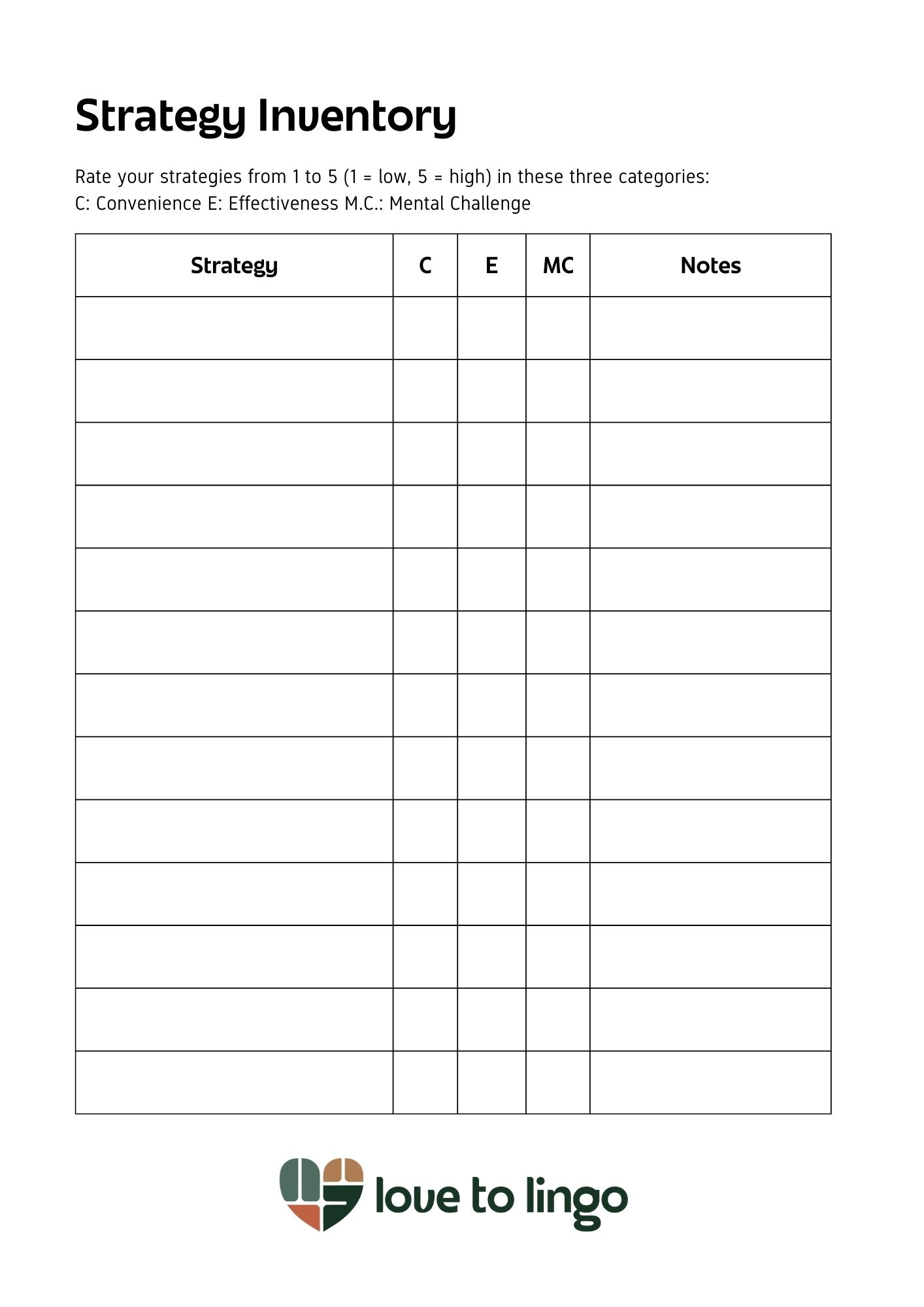For the next five weeks, I’ll be sharing quick posts to help you build a sustainable and joyful language learning practice. This series, Fresh Foundations, is all about actionable steps you can take in just 15-30 minutes a day to create a language learning routine that works for you.
If that sounds like something you’re ready for, let’s get into the activity for Day 3!
Do a Language Learning Strategy Inventory
Welcome to Day Three! Today, we’re exploring language learning techniques and strategies you already use. The goal is to reflect on what you’re doing and how it’s working for you.
Here’s what to do:
1. Make a List
Write down all the strategies and techniques you’re currently using to learn or practice your language. These can be big or small, such as:
Watching Netflix with subtitles
Guessing word meanings from context
Reviewing flashcards daily
Practicing speaking during a commute
Evaluate Each Strategy
For every strategy, rate it from 1 to 5 (1 = low, 5 = high) in these three categories:
Convenience: How easy is it to use regularly?
Effectiveness: How much progress does it help you make?
Mental Challenge: How much does it stretch your thinking or skills?
You can either do this in your notebook, digital organizer or you can download a pdf template.
2. Reflect
Look at your ratings. Which strategies are convenient and effective? Are there any that feel easy but don’t help much? Or ones that are highly effective but need more time or energy?
Bonus Tip: Create a “Quick Wins” List
As you evaluate your strategies, identify the ones that are both convenient and motivating—even if they’re small steps. These are your “quick wins.” (This idea came from an interview with Rachel Harris on the TESOL Pop Podcast.)
Make a separate list of these strategies for the days when:
You’re short on time.
You’re not feeling motivated.
Examples might include:
Listening to a short podcast or song in your target language.
Guessing words from context while reading headlines.
Watching a 5-minute YouTube video with subtitles in your language.
Having these “quick wins” ready will keep you engaged even on your busiest or most unmotivated days.
Why This Matters
By understanding what’s working and creating a plan for when things get tough, you’re setting yourself up for long-term success.
When you’ve finished, feel free to share one insight or strategy that’s working well for you. I’d love to hear!
Before you finish your language session, schedule 30 minutes/day in your calendar for language practice for next week. Consider how easy it has been to keep to the time you’ve blocked off for this week and make adjustments if needed.
Pro Tip: Scheduling your language learning practice for the same time each day helps make it an automatic habit. The less you have to think about, the better!
I’ll be back on Monday with your task for Day 4. Next week we’ll focus on our receptive skills. Have a great weekend.






